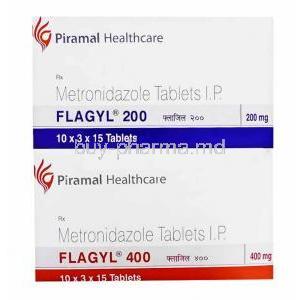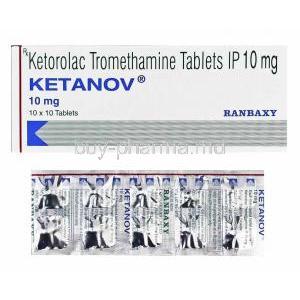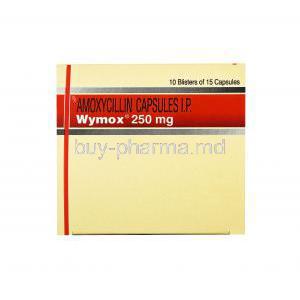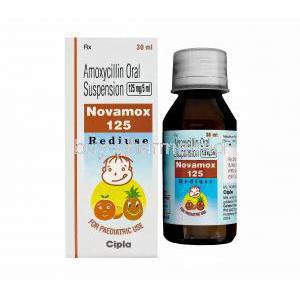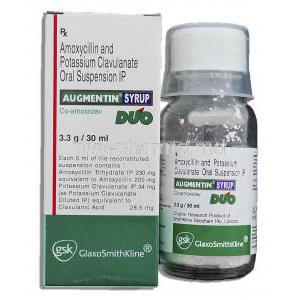Cefuroxime
- Introduction
- How Cefuroxime Works
- Uses of Cefuroxime
- Off-label Use of Cefuroxime
- Dosage and Administration
- Composition of Cefuroxime
- Storage Instructions
- Drug Interactions with Cefuroxime
- Warnings and Contraindications
- Careful Administration and Important Precautions
- Side Effects of Cefuroxime
- Common Side Effects
- Overdosage of Cefuroxime
- Handling Precautions
Introduction
With its attention to detail, scientific research tends to uncover discoveries. In the field of pharmaceuticals, Cefuroxime serves as an example of this phenomenon. Examining its path sheds light on its importance in the realm of medical science.

Brief history and discovery of Cefuroxime
The discovery of Cefuroxime can be credited to the mid-20th century when scientists were actively searching for antibacterial treatments. This era witnessed a resurgence in drug discovery efforts. During this time, Cefuroxime was identified as an antibiotic against a wide range of bacterial infections and was included in the pharmacopeia. Notable milestones in its discovery include;
- The increasing demand for antibiotics in the 1970s
- Exploration of various molecular structures to combat resistance
- Successful synthesis followed by clinical trials that demonstrated its efficacy.
Classification and family of the drug
Cefuroxime is part of a known group of antibiotics called cephalosporins, which fall under the category of β lactam antibiotics. Understanding its pharmacodynamics and pharmacokinetics is crucial in recognizing its classification. Cephalosporins are often categorized into generations based on their specific ranges of effectiveness. As a second-generation cephalosporin, cefuroxime displays spectrum antibacterial power making it an essential tool for healthcare professionals.
How Cefuroxime Works
Mechanism of action against bacteria
Bacterial infections often occur when harmful entities multiply at a level. Cefuroxime, through its mechanism, hinders this growth. Its main action involves blocking the synthesis of the cell wall.
By binding to the penicillin-binding proteins (PBPs) found within the cell wall, Cefuroxime prevents the linking of chains.
As a result, The bacterial cell wall becomes unstable and susceptible to pressure. Permeability increases, allowing external compounds to enter quickly. Ultimately bacterial cells undergo lysis and die.
The role of beta-lactam antibiotics
The central characteristic of β lactam antibiotics such as Cefuroxime, penicillins, and carbapenems lies in their shared structure known as the β lactam ring. This specific molecular arrangement allows these drugs to interfere with the synthesis of cell walls.
While there may be differences within subclasses, the overall approach, targeting bacterial cell walls, remains consistent. It is worth noting that there has been an increase in resistance to these drugs, leading to the administration of β lactamase inhibitors in certain situations to enhance their therapeutic effectiveness.
Uses of Cefuroxime
Treating bacterial infections: specific types and strains
The complexities associated with infections necessitate the availability of a diverse array of effective antibiotics. Cefuroxime has emerged as a member of this arsenal. Being a second-generation cephalosporin it possesses the ability to target a range of bacterial species, including both Gram-positive and Gram-negative strains.
- Specifically, Cefuroxime is proven to be effective against tract infections caused by Streptococcus pneumoniae and Streptococcus pyogenes.(1)
- It also demonstrates efficacy against ear and sinus infections caused by Haemophilus influenzae and Moraxella catarrhalis respectively.(2)
- In addition, it can combat tract infections caused by Enterobacteriaceae such as Escherichia coli.(3)
- Furthermore it serves as an alternative treatment option for skin infections caused by strains of Staphylococcus aureus.(4)
With its established pharmacological profile, Cefuroxime is an indispensable tool in a clinician's therapeutic repertoire. Its broad spectrum effectiveness ensures that it can address bacterial strains and alleviate the burden of infections affecting various parts of the body.
1. NCBI - Cefuroxime
2. PubMed - Cefuroxime axetil in the treatment of sinusitis. A review
3. Daily Med - CEFUROXIME AXETIL- cefuroxime axetil tablet DIRECT RX
4. MedlinePlus - Cefuroxime

Streptococcus pneumoniae
Preventing infections before, during, or after surgery
Surgical procedures are essential in medicine but carry the unintended risk of introducing infections. When the skin and mucosal barriers are breached, the internal environment is vulnerable to pathogens. This is where Cefuroxime plays a preventive role. By using Cefuroxime, as a measure, it acts as a protective shield against potential pathogens. Its ability to kill bacteria helps;
- Decrease the chances of surgical site infections that can hinder recovery.
- Reduce hospital-acquired infections, especially in high-risk procedures or patients with weakened immune systems.
- Ensure an environment during surgeries, particularly those involving prosthetic material implantation.
Considering that surgical interventions play a role in modern medicine, we cannot underestimate the significance of Cefuroxime in safeguarding patient well-being. It does not facilitate smoother recoveries but also helps mitigate complications reinforcing the safety and effectiveness of surgical procedures.
Off-label Use of Cefuroxime
Definition and understanding of off-label use
Off-label use refers to when a medication's prescribed for purposes, ways of taking it, or in forms that regulatory agencies have not officially approved. While this may raise concerns, it is quite common in practice.
In fact, label prescribing often comes from cutting-edge research, personal experiences, or patients' unique circumstances. Some key aspects of off-label use include;
- using a medication in a population that was not initially specified (such as children or older adults)
- prescribing dosages or frequencies than those stated on the label
- using the medication to treat conditions that were not originally intended during its development and approval process.
Common off-label applications of Cefuroxime
Although Cefuroxime is primarily known for its ability to fight a range of bacterial infections it has also been found to be effective in several off-label uses.
These additional applications, which are supported by both evidence and clinical judgment go beyond the original intended uses of the medication. Some examples of off-label use include;
- Treating infections caused by bacteria that may have borderline sensitivity to cephalosporins.
- Addressing certain atypical pathogens that may not be explicitly mentioned in the original indications.
- Using it as a measure, in certain non-surgical scenarios where its broad spectrum activity can help prevent potential infections.
Clinical studies and evidence for off-label use
The scientific community is dedicated to exploring the potential of drugs. In the case of Cefuroxime, numerous clinical studies have investigated its off-label applications revealing its versatility beyond its intended uses. Several important findings support the use of Cefuroxime in off-label scenarios;
- Many individual cases have shown its effectiveness in treating unusual infections highlighting its versatility as a therapeutic option.
- Comparative studies with cephalosporins often demonstrate that it performs just as well or even better in certain situations.
- Safety studies have consistently confirmed that using Cefuroxime off-label is generally safe compared to other antibiotics.
While Cefuroxime's primary purpose remains fighting infections, its off-label applications demonstrate how pharmaceuticals can be adapted to meet diverse clinical needs. With research and clinical consideration, off-label uses become an essential part of therapeutic practices.
Dosage and Administration
General dosage guidelines
In the field of pharmacology, finding the right dosage is crucial to ensure that the treatment is effective. When it comes to Cefuroxime, the specific dose depends on factors such as the severity of the infection, how susceptible the causative organism is to the medication, and the patient's overall health condition.
- Typically for adults with infections, a dosage range of 250 mg to 500 mg is given twice daily.
- In children, doses are often adjusted based on their body weight and usually range from 20 to 30 mg per kilogram, per day, split into multiple administrations.
Adjustments for specific conditions or populations
There is no one size fits all approach in therapeutics. It is important to acknowledge the differences among patients and make adjustments to dosages for specific groups;
- For patients with renal impairment, it may be necessary to reduce dosages or extend the time, between doses.
- Elderly patients require careful monitoring of renal function and consideration of any other health conditions that may require dose adjustments.
- In cases of severe infections, it might be appropriate to increase the dosage or switch to intravenous administration.
Route of administration: oral vs. injectable
Cefuroxime is not versatile in terms of its therapeutic benefits but also offers different ways of administration; for patients outside the hospital, tablets or suspensions are available, providing convenience and easy compliance. In urgent clinical situations or in hospital settings, intravenous or intramuscular injections are preferred as they ensure quick absorption into the bloodstream and play a crucial role in treating severe infections.
Composition of Cefuroxime
Active and inactive ingredients
Cefuroxime's therapeutic effectiveness is primarily attributed to its ingredient, either Cefuroxime axetil or Cefuroxime sodium depending on the specific formulation. This key component is responsible for its properties. In addition to this, there are other ingredients called excipients that are crucial for the formulation, stability, and absorption of the drug. These encountered excipients include binders, fillers, and stabilizing agents.
Variations among different formulations and brands
The world of pharmaceuticals is filled with brands and variations of Cefuroxime all competing for approval in clinical settings. Although the main ingredient remains the same there may be variations in factors such as;
- The amount of the ingredient particularly, in suspensions.
- The combination of ingredients affects the absorption and stability of the drug.
- The packaging and design of tablets are customized to ensure compliance and distinguishability.
Storage Instructions
Recommended storage temperatures
To maintain the effectiveness of Cefuroxime it is important to store it under the conditions. It is advised to keep Cefuroxime within a temperature range of 15°C to 30°C, protected from moisture and direct sunlight.
Shelf life and expiration considerations
The effectiveness of Cefuroxime, like any medication, is limited by its shelf life. Usually, it remains effective for 2 to 3 years after being manufactured. After the expiration date, the drug may lose its potency. It is important to use it wisely within the specified timeframe.
Handling to prevent contamination
It is crucial to maintain the purity of Cefuroxime, particularly when it comes to its form. Some important steps to follow include;
1. Before using the vial, always make sure that the seal is intact and has not been tampered with.
2. When preparing and administering the drug, use techniques to ensure cleanliness.
3. Dispose of any remaining contents in single-use vials to prevent any microbial contamination.
These measures are essential, for safeguarding the integrity of Cefuroxime and ensuring its effectiveness.
Drug Interactions with Cefuroxime
Common drugs that may interact
In the world of pharmacology, how different drugs interact plays a crucial role in determining the effectiveness of treatments. When it comes to Cefuroxime, other medications can either enhance its effectiveness or cause undesirable effects. Some noteworthy examples include;
- Probenecid; This medication has the potential to reduce the elimination of Cefuroxime by the kidneys, which could lead to levels of Cefuroxime in the bloodstream.
- Oral contraceptives; The effectiveness of oral contraceptives might be reduced if taken together with Cefuroxime.
- Antacids; Taking oral formulations of Cefuroxime and antacids can interfere with its absorption into the body.
These interactions are important to consider when prescribing or taking Cefuroxime as they can impact its effects and potential side effects.
Potential outcomes of drug interactions
The effects of drug interactions can vary from harmless to having a clinical impact. When it comes to Cefuroxime, these interactions could potentially result in the following outcomes;
1. Reduced effectiveness of the treatment, which could compromise the control of infections.
2. Increased risk of experiencing effects due to higher levels of the drug in the bloodstream.
3. Changes in how other drugs are processed and absorbed by the body when taken together with Cefuroxime.
Steps to prevent adverse interactions
Successfully navigating the web of drug interactions requires a careful balance of clinical expertise and patient education. To minimize any negative effects, from these interactions healthcare professionals should consider the following strategies;
1. Conduct a patient history assessment to identify any medications that are currently being taken.
2. When feasible it may be beneficial to delay or stagger the administration of drugs that have known interactions.
3. Regularly monitoring both drug levels and physiological parameters can help identify any indications of adverse interactions.
By implementing these measures we can ensure that patients receive care while minimizing the risks associated with drug interactions.
Warnings and Contraindications
Conditions or factors that may prohibit Cefuroxime use
Cefuroxime, like any therapeutic drug, is not a cure-all and should be avoided in certain situations. The main contraindications include;
1. If there is a documented hypersensitivity to Cefuroxime or other cephalosporin antibiotics.
2. There may be a potential cross-reactivity if there is a history of allergic reactions to penicillins.
3. If there are gastrointestinal conditions, such as a history of colitis related to the use of antibiotics.
Please note that these are considerations when deciding whether or not to use Cefuroxime as a treatment option.
Potential risks and their severity
Using Cefuroxime in situations where it is not recommended can lead to a variety of consequences. These include reactions that can be life-threatening and require immediate intervention.
It can also cause issues ranging from mild indigestion to severe colitis. Additionally, it may affect kidney and liver functions, potentially requiring the medication to be stopped or the dosage adjusted.
Careful Administration and Important Precautions
Monitoring during treatment
Cefuroxime is a component in many treatment plans, but it requires careful monitoring to achieve the best results. This involves testing kidney and liver functions, especially during long-term use. It's also important to assess blood counts, for any abnormalities and keep an eye out for signs of infections or medication-induced colitis.
Adjustments in cases of renal or liver impairment
The kidney and liver are important in how the body processes. Gets rid of Cefuroxime. When there are issues with their function, changes in dosage or timing may be needed for people with kidney problems. For those, with liver problems it is less common but still important to watch for any buildup of the medication or possible harmful effects.
Side Effects of Cefuroxime
Understanding the potential side effects
Cefuroxime is an established tool in fighting bacterial infections, but it's important to be aware of its potential side effects. Understanding these effects is crucial for both doctors and patients as it helps them make decisions and prioritize patient safety.
Distinguishing between common and rare side effects
Pharmacovigilance research and clinical trials have identified categories of side effects for Cefuroxime based on how often they occur. It's important to note that the distinction between rare side effects isn't just a matter of statistics, but it also has clinical significance. While common side effects can be expected and handled efficiently, recognizing and addressing side effects often requires keen clinical judgment.
Common Side Effects
List and description of frequently reported side effects
Reported side effects of Cefuroxime include;
- Diarrhea; It is usually mild but in rare cases, it may indicate drug-induced colitis.
- Nausea or Vomiting; These symptoms are usually temporary and can be relieved over time.
- Headache; Generally headaches caused by Cefuroxime are mild and tend to go away without specific treatment.
- Rash; In severe cases, discontinuation of the medication may be necessary if a mild skin rash occurs.

Managing common side effects and when to seek medical attention
Prudent management techniques can help reduce the impact of these side effects. Diarrhea can be controlled by staying well hydrated and taking probiotics.
If the symptoms persist, it's important to seek medical evaluation. If you experience nausea, taking the medication with meals may provide some relief. For headaches counter pain relievers may be an option.
It's always a good idea to consult with a healthcare professional first. Any signs of a reaction, such as difficulty breathing or swelling, require immediate medical attention.
Overdosage of Cefuroxime
Recognizing symptoms of overdose
Cases of Cefuroxime overdose are not common. It's crucial to identify them early for prompt intervention. Symptoms can include signs like seizures gastrointestinal issues such, as severe diarrhea, and possible kidney problems.
Immediate steps and treatments to follow in cases of overdose
In situations where an overdose occurs taking quick action can make a significant difference between recovering well or experiencing negative consequences. It is important to stop using the drug in question. Even if there are no symptoms, it is advisable to seek immediate medical attention. In a facility healthcare professionals may consider providing supportive care such as intravenous fluids and, in some cases hemodialysis based on the severity of the overdose.
Handling Precautions
Ensuring the safety of the person administering the drug
When administering Cefuroxime in injectable forms it is important to take precautions to avoid any accidental exposure or injury. Following techniques using safety needles and being cautious, about any spills are crucial steps to ensure safety.
Safe disposal methods for expired or unused medicine
It is important to prioritize integrity and safety when it comes to disposing of medications. It is recommended to avoid flushing medicines down toilets or drains unless specifically instructed to do. If possible, utilize community drug take-back programs.
In cases where such programs are are not available a good practice is to mix the medication with an undesirable substance such as coffee grounds and place it in a sealed bag for disposal in landfills.
Remember to remove any personal information, from prescription labels before discarding the containers.
















